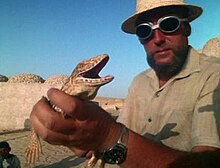
Werner Herzog is a German filmmaker, actor, opera director, and author. Regarded as a pioneer of New German Cinema, his films often feature ambitious protagonists with impossible dreams, people with unusual talents in obscure fields, or individuals in conflict with nature. His style involves avoiding storyboards, emphasizing improvisation, and placing his cast and crew into real situations mirroring those in the film they are working on.
Fata Morgana often refers to:

Popol Vuh is a text recounting the mythology and history of the Kʼicheʼ people of Guatemala, one of the Maya peoples who also inhabit the Mexican states of Chiapas, Campeche, Yucatan and Quintana Roo, as well as areas of Belize, Honduras and El Salvador.

The English Patient is a 1996 epic romantic war drama directed by Anthony Minghella from his own script based on the 1992 novel of the same name by Michael Ondaatje, and produced by Saul Zaentz. The film starred Ralph Fiennes and Kristin Scott Thomas alongside Juliette Binoche, Willem Dafoe and Colin Firth in supporting roles.

The Enigma of Kaspar Hauser is a 1974 West German drama film written and directed by Werner Herzog and starring Bruno Schleinstein and Walter Ladengast. The film closely follows the real story of foundling Kaspar Hauser, using the text of actual letters found with Hauser.
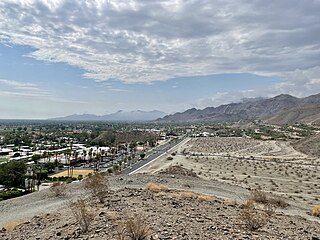
Rancho Mirage is a city in Riverside County, California, United States. The city is a low-density desert-resort community with resorts, golf courses, and country clubs within the Colorado Desert section of the Sonoran Desert. Nestled along the foothills of the Santa Rosa Mountains in the south, it is located several minutes east of Palm Springs. The city is adjacent to Cathedral City, Palm Desert, and unincorporated Thousand Palms. The population was 16,999 at the 2020 census, down from 17,218 at the 2010 census, though the seasonal population can exceed 20,000. Incorporated in 1973, Rancho Mirage is one of the nine cities of the Coachella Valley.
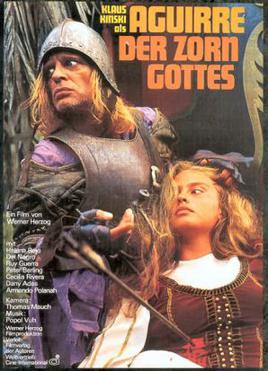
Aguirre, the Wrath of God is a 1972 epic historical drama film produced, written and directed by Werner Herzog. Klaus Kinski stars in the title role of Spanish soldier Lope de Aguirre, who leads a group of conquistadores down the Amazon River in South America in search of the legendary city of gold, El Dorado. The accompanying soundtrack was composed and performed by kosmische band Popol Vuh. The film is an international co-production between West Germany and Mexico.

Crispin Hellion Glover is an American actor, filmmaker and artist. He is known for portraying eccentric character roles on screen. His breakout role was as George McFly in Back to the Future (1985), which he followed by playing Layne, one of the leading roles in River's Edge (1986). Through the 1990s, Glover garnered attention for portraying smaller but notable roles, including Cousin Del in Wild at Heart (1990), Andy Warhol in The Doors (1991), Bobby McBurney in What's Eating Gilbert Grape (1993) and the Train Fireman in Dead Man (1995).

Lessons of Darkness is a 1992 documentary film directed by Werner Herzog. The film is an exploration of the ravaged oil fields of post-Gulf War Kuwait, decontextualized and characterized in such a way as to emphasize the terrain's cataclysmic strangeness. An effective companion to his earlier film Fata Morgana, Herzog again perceives the desert as a landscape with its voice.
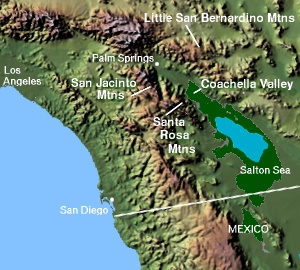
The Coachella Valley is an arid rift valley in the Colorado Desert of Southern California in Riverside County. The valley has been referred to as Greater Palm Springs and occasionally the Palm Springs Area due to the historic prominence of the city of Palm Springs. The valley extends approximately 45 mi (72 km) southeast from the San Gorgonio Pass to the northern shore of the Salton Sea and the neighboring Imperial Valley, and is approximately 15 mi (24 km) wide along most of its length. It is bounded on the northeast by the San Bernardino and Little San Bernardino Mountains, and on the southwest by the San Jacinto and Santa Rosa Mountains.
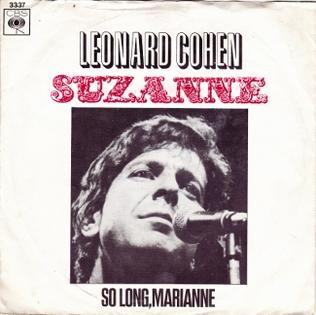
"Suzanne" is a song written by Canadian poet and musician Leonard Cohen in the 1960s. First published as a poem in 1966, it was recorded as a song by Judy Collins in the same year, and Cohen performed it as his debut single, from his 1967 album Songs of Leonard Cohen. Many other artists have recorded versions, and it has become one of the most covered songs in Cohen's catalogue.

Even Dwarfs Started Small is a 1970 West German absurdist comedy-drama film written, produced, and directed by Werner Herzog.
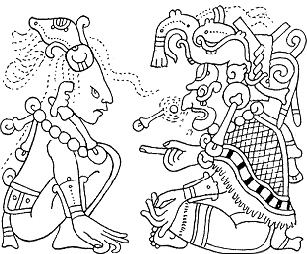
The traditional Maya or Mayan religion of the extant Maya peoples of Guatemala, Belize, western Honduras, and the Tabasco, Chiapas, Quintana Roo, Campeche and Yucatán states of Mexico is part of the wider frame of Mesoamerican religion. As is the case with many other contemporary Mesoamerican religions, it results from centuries of symbiosis with Roman Catholicism. When its pre-Hispanic antecedents are taken into account, however, traditional Maya religion has already existed for more than two and a half millennia as a recognizably distinct phenomenon. Before the advent of Christianity, it was spread over many indigenous kingdoms, all with their own local traditions. Today, it coexists and interacts with pan-Mayan syncretism, the 're-invention of tradition' by the Pan-Maya movement, and Christianity in its various denominations.

Florian Fricke was a German musician who started his professional career with electronic music, using the Moog synthesizer, and was a founding member of the Krautrock band Popol Vuh.
Jörg Schmidt-Reitwein was a German cinematographer. He has collaborated with director Werner Herzog on a number of projects. Among his many collaborations with other directors, Schmidt-Reitwein is known for shooting Alan Greenberg's acclaimed 1982 documentary about Jamaica and death of Bob Marley, Land of Look Behind.

The 23rd Cannes Film Festival ran from 3 to 18 May 1970. This year, Robert Favre LeBret, the founder of the festival, decided not to include any films from Russia and Japan. He was tired of the "Slavic spectacles and Japanese samurai flicks.". The Russians took back their juror Sergei Obraztsov and left the jury panel with only eight members.
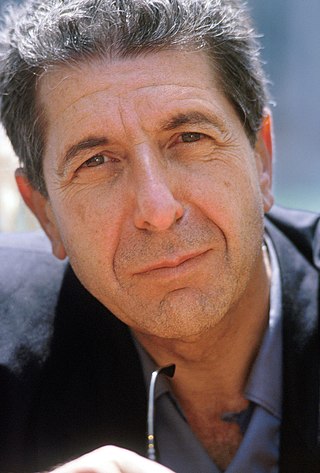
Leonard Norman Cohen was a Canadian singer-songwriter, poet, and novelist. Themes commonly explored throughout his work include faith and mortality, isolation and depression, betrayal and redemption, social and political conflict, and sexual and romantic love, desire, regret, and loss. He was inducted into the Canadian Music Hall of Fame, the Canadian Songwriters Hall of Fame, and the Rock and Roll Hall of Fame. He was invested as a Companion of the Order of Canada, the nation's highest civilian honour. In 2011, he received one of the Prince of Asturias Awards for literature and the ninth Glenn Gould Prize.
Cinespia is an organization that hosts on-site screenings of classic films in and around Los Angeles, California. Launched in 2002, Cinespia shows films from the 1930s through the 1990s mostly in open-air settings at historic locations. Its most popular series runs weekly from May through September on Saturday nights at the Hollywood Forever Cemetery. In addition, it screens films, both contemporary and canonical, at other locations throughout the year.

Werner Herzog is a German filmmaker whose films often feature ambitious or deranged protagonists with impossible dreams. Herzog's works span myriad genres and mediums, but he is particularly well known for his documentary films, which he typically narrates.
